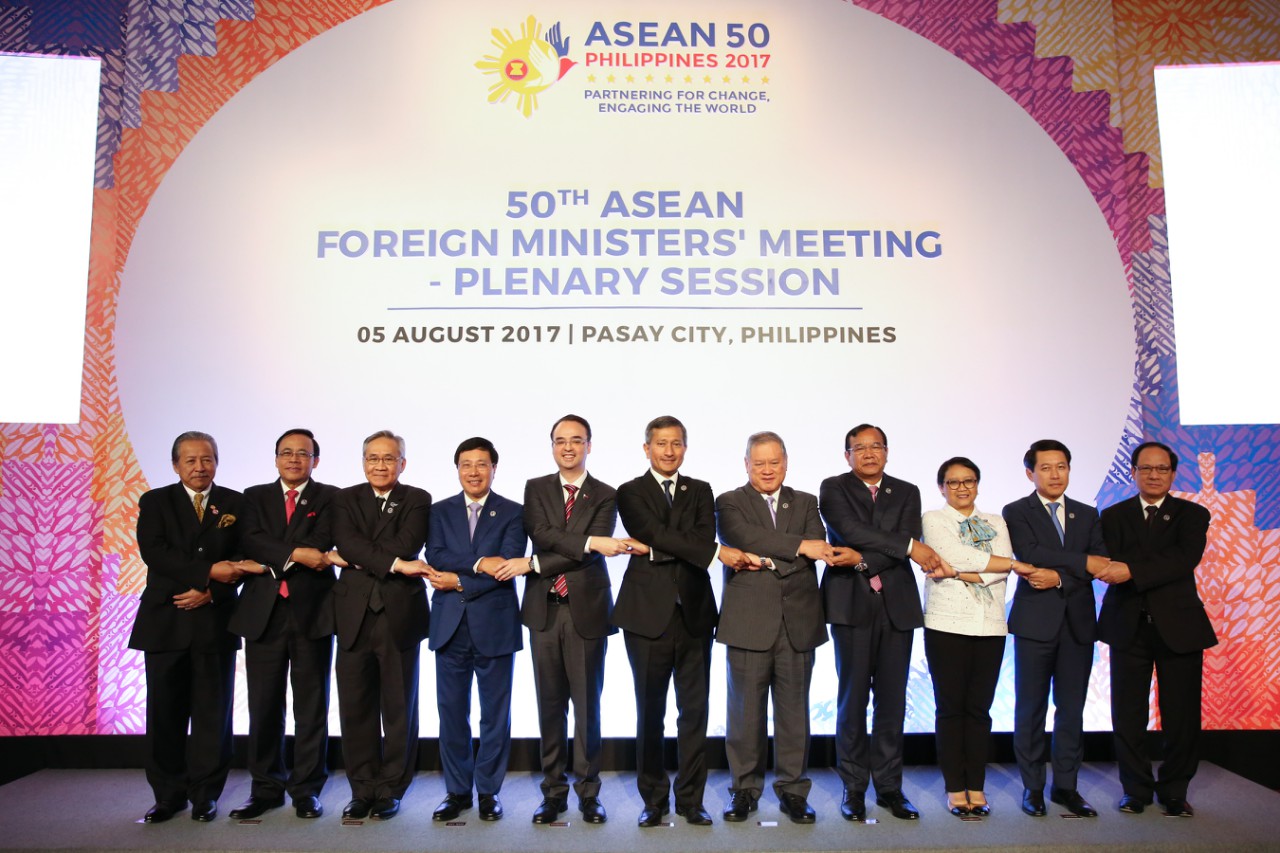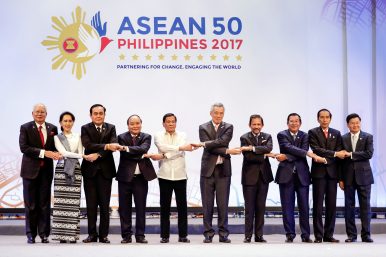Commentaries
The views expressed are the author's alone and do not constitute official positions of APPFI.
The views expressed are the author's alone and do not constitute official positions of APPFI.
(This article originally appeared in Japanese translation in Gaiko (Diplomacy), Vol 46, Nov./Dec. 2017, pp. 43-49)
The first five years of Xi Jinping’s rule saw major changes in Chinese policy that have affected its relations with Southeast Asia. With a slowing economy in need of difficult restructuring, a global financial crisis threatening China’s markets and sources of investments, the Communist Party facing issues of legitimacy amidst rampant corruption, and serious environmental problems threatening growth and people’s welfare, Xi set out on a direction that was rather unexpected. He began to assert strong central authority domestically; waged a sustained anti-corruption campaign (that also masked a purge of political rivals); took steps to raise China’s economic, political and military profile abroad; and began to contest some rules of the international order which China had been dissatisfied with. Xi abandoned Deng Xiaoping’s exhortation - obeyed by his predecessors Jiang Zemin and Hu Jintao - that China keep to strategic patience, remain low-key, and “bide its time and hide its capacities” (taoguang yanghui韬光养晦 ). Xi Jinping was instead happy for China to show off its achievements (including in the area of defense technology), and seemed in a greater hurry for China to take its place – after a “century of humiliation” -- at the rule-making table alongside other big powers. In particular, the Chinese leadership set as one of its goals that China, already the world’s largest trading nation and a top trading partner of over 120 countries in the world, shall become a global maritime power. In the process, China under Xi became more assertive in defending territorial interests in surrounding seas, including the East China Sea facing Japan and the Koreas, and the South China Sea where several Southeast Asian countries also had claims to territory and maritime entitlements.
A succession of nuclear and missile tests and vocal response from its neighbors and the US put the spotlight back again on one of the world’s most enduring flashpoints, the Korean Peninsula. The heated US-DPRK verbal exchanges of threats and Pyongyang’s resolve to push through with its nuclear and missile program despite tightening international sanctions raise serious concern about potential conflict with catastrophic consequences. The conduct of annual US-ROK military exercises in spite of the tense atmosphere, US pronouncements that all options (including military) are on the table, and dispatch of military assets in the area are matched by DPRK’s defiance demonstrated by accelerating the pace and intensity of its nuclear and missile program. All these feed into a deadly spiral that needs to be de-escalated soonest. Recognizing the high stakes involved, the international community began to express deep concern on the issue. Countries bordering DPRK and which have long been engaged in efforts to denuclearize the peninsula, notably ROK, China, Japan, and Russia, along with US, began to undertake measures to tackle the issue, although divergence on how best to proceed with the same is apparent.

Photo from ASEAN 2017
Although not as proximate, Southeast Asia, which includes US security allies that houses American troops and assets, is within the range of DPRK missiles, which according to Pyongyang are now even able to hit targets as far away as Guam and even mainland US. Thus, Southeast Asia made the developments in the Korean Peninsula one of the key regional and international issues discussed in the 50th ASEAN Foreign Ministers Meeting held in Manila last August 5, 2017. In fact, the recent round of missile tests conducted by DPRK came in third after the South China Sea and violent extremism, terrorism and radicalization indicating the high importance attached by the regional bloc on the matter. Philippines, one of the original members of ASEAN and this year’s ASEAN Summit host, presided over such meetings and, as such, have a hand in shepherding the Association to come up with a common stand on the issue. With a firebrand and unorthodox leader at the helm known for breaking longstanding traditions (e.g. downgrading US security ties, expanding economic ties with China, considering security ties with China and Russia) in his quest for an independent foreign policy, how does Philippines see the issue and what are its interests on the same? What role can it play, if any, in keeping stability in a region known as the engine of global growth and development, but which is long haunted by unresolved disputes such as this one?

ST ILLUSTRATION: MANNY FRANCISCO*
The feeble stance of the Association of Southeast Asian Nations (ASEAN) on the South China Sea in the past has been made even weaker by the sudden shift of Philippine foreign policy under the Duterte administration. As the chairman for this year’s summit, the Philippines could have used this opportunity to rally the Southeast Asian states to support and uphold the arbitration ruling that it won in July 2016, affirming the rights of littoral states under the UN Convention on the Law of the Sea. Instead, President Duterte decided not to talk to China about the ruling for now – while he resets diplomatic ties and secures economic aid from China.
This essay was originally written for a Conference marking the 90th Anniversary of Southeast Asian Studies and Overseas Chinese Studies in Jinan University, Guangzhou, on July 15-16, 2017. Some text is drawn from the integrative chapter in a newly published volume "Building ASEAN Community: Political-Security and Sociocultural Reflections" (ERIA, DFA, 2017)
The Association of Southeast Asian Nations (ASEAN) turns 50 in 2017. Critics and supporters of ASEAN have much to say about the group’s achievements and shortcomings since its establishment in 1967. Critics will say ASEAN has been measured and found wanting. There are too many conflicts within and among its members that remain unresolved. The principles of sovereignty and non-interference in internal affairs have been too privileged in practice, at the expense of effective cooperation and integration. Organizationally, ASEAN is too process-oriented while inadequate in achieving timely results and impact. Consensus among member-states remains shallow even on certain critical issues that require solid agreement. The absence of a common foreign policy and differences in security priorities and threat perceptions continue to stand in the way of a true political-security community, it might also be said.

Image Credit: Reuters/Mark Crisantol
Supporters, on the other hand, will argue: were it not for ASEAN, would Southeast Asia even be as peaceful, stable, and economically progressive as it has been and still is, after several decades? Aren’t the norms and practices associated with the ‘ASEAN Way’ for which it has often been criticized – including informality, nonconfrontation, relying on consensus-based decision making – part of the reasons the member states have remained together all these years? The fact that other countries, including big powers and non-likeminded states, choose to engage in ASEAN-led multilateral arrangements is also clear recognition of the organization’s important contributions.